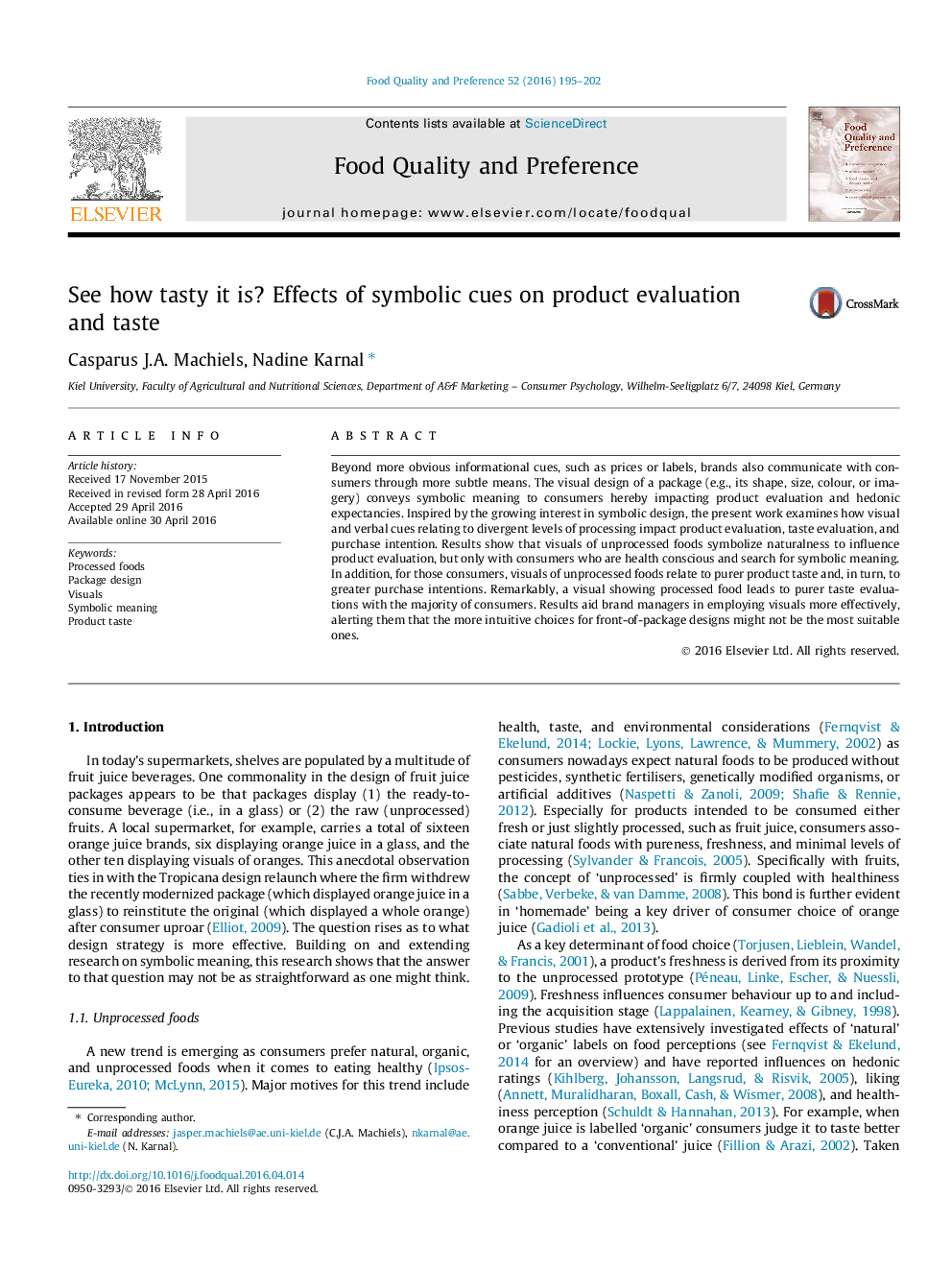| Article ID | Journal | Published Year | Pages | File Type |
|---|---|---|---|---|
| 6261059 | Food Quality and Preference | 2016 | 8 Pages |
â¢Consumers associate unprocessed foods with naturalness and freshness.â¢Processing level of a fruit juice was manipulated visually and verbally.â¢Consumers did not infer lower levels of processing from the visual and text.â¢However, moderating effects emerged for health consciousness and metaphor processing.â¢Perceived level of processing mediated the effect of product visual on actual taste.
Beyond more obvious informational cues, such as prices or labels, brands also communicate with consumers through more subtle means. The visual design of a package (e.g., its shape, size, colour, or imagery) conveys symbolic meaning to consumers hereby impacting product evaluation and hedonic expectancies. Inspired by the growing interest in symbolic design, the present work examines how visual and verbal cues relating to divergent levels of processing impact product evaluation, taste evaluation, and purchase intention. Results show that visuals of unprocessed foods symbolize naturalness to influence product evaluation, but only with consumers who are health conscious and search for symbolic meaning. In addition, for those consumers, visuals of unprocessed foods relate to purer product taste and, in turn, to greater purchase intentions. Remarkably, a visual showing processed food leads to purer taste evaluations with the majority of consumers. Results aid brand managers in employing visuals more effectively, alerting them that the more intuitive choices for front-of-package designs might not be the most suitable ones.
